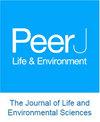The role of heat shock proteins in HIV-1 pathogenesis: a systematic review investigating HSPs-HIV-1 correlations and interactions
IF 2.3
3区 生物学
Q2 MULTIDISCIPLINARY SCIENCES
引用次数: 0
Abstract
Background The human immunodeficiency virus (HIV) pandemic is a global health emergency. Studies suggest a connection between heat shock proteins (HSPs) and HIV-1 infection pathogenesis. This systematic review aims to summarize HSPs’ role in HIV-1 infection pathogenesis. Materials and Methods A systematic literature search was undertaken across the National Library of Medicine (MEDLINE-PubMed), Science Direct, Web of Science, Scopus, SpringerLink, Sage, ProQuest, and Google Scholar databases, using related keywords to synthesize the HSPs’ role in HIV-1 infection pathogenesis. This literature review was conducted according to Preferred Reporting Items for Systematic Reviews and Meta-Analyses (PRISMA) guidelines, and the protocol was registered in the Open Science Framework (OSF) database under DOI 10.17605/OSF.IO/VK3DJ. Results A database search revealed 3,332 articles, with 14 in vitro studies analysing the interaction between HSPs and HIV-1 across different cell types. HSPs are involved in HIV-1 infection through direct interactions and indirect responses to cellular stress, including HSP40, HSP70, HSPBP1, and HSP90. The study explores HSP interactions at various stages of the viral life cycle, including entry, uncoating, replication, transmission, and latency reactivation. Conclusion HSPs are crucial for the HIV lifecycle and immune response, offering the potential for new therapeutic strategies. Further research is needed to understand the clinical significance and target potential.热休克蛋白在 HIV-1 发病机制中的作用:研究 HSPs-HIV-1 关联性和相互作用的系统综述
背景 人类免疫缺陷病毒(HIV)大流行是一个全球性的健康问题。研究表明,热休克蛋白(HSPs)与 HIV-1 感染发病机制之间存在联系。本系统综述旨在总结热休克蛋白在 HIV-1 感染发病机制中的作用。材料与方法 使用相关关键词在美国国家医学图书馆(MEDLINE-PubMed)、Science Direct、Web of Science、Scopus、SpringerLink、Sage、ProQuest 和 Google Scholar 数据库中进行系统性文献检索,总结 HSPs 在 HIV-1 感染发病机制中的作用。该文献综述根据系统综述和元分析首选报告项目(PRISMA)指南进行,并在开放科学框架(OSF)数据库中进行了注册,注册号为 DOI 10.17605/OSF.IO/VK3DJ。结果 通过数据库检索发现了 3332 篇文章,其中有 14 项体外研究分析了不同类型细胞中 HSP 与 HIV-1 之间的相互作用。HSP 通过直接相互作用和对细胞应激的间接反应参与 HIV-1 感染,包括 HSP40、HSP70、HSPBP1 和 HSP90。该研究探讨了病毒生命周期各个阶段的 HSP 相互作用,包括进入、脱衣壳、复制、传播和潜伏再激活。结论 HSP 对 HIV 生命周期和免疫反应至关重要,为新的治疗策略提供了潜力。要了解其临床意义和靶点潜力,还需要进一步的研究。
本文章由计算机程序翻译,如有差异,请以英文原文为准。
求助全文
约1分钟内获得全文
求助全文
来源期刊

PeerJ
MULTIDISCIPLINARY SCIENCES-
CiteScore
4.70
自引率
3.70%
发文量
1665
审稿时长
10 weeks
期刊介绍:
PeerJ is an open access peer-reviewed scientific journal covering research in the biological and medical sciences. At PeerJ, authors take out a lifetime publication plan (for as little as $99) which allows them to publish articles in the journal for free, forever. PeerJ has 5 Nobel Prize Winners on the Board; they have won several industry and media awards; and they are widely recognized as being one of the most interesting recent developments in academic publishing.
 求助内容:
求助内容: 应助结果提醒方式:
应助结果提醒方式:


